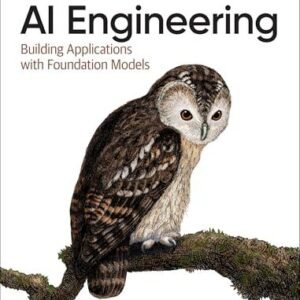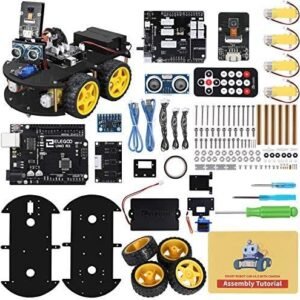In the ever-evolving landscape of creativity, technology continues to serve as a catalyst for innovation, and nowhere is this more evident than in the realm of artificial intelligence (AI). Gone are the days when artists relied solely on traditional mediums and techniques; today, a surge of AI-driven creative tools is revolutionizing the way we conceive, create, and engage with art. From generative design software that assists in creating stunning visual compositions to AI algorithms that can compose music and write captivating narratives, the tools available to today’s artists are expanding the boundaries of creative expression. In this article, we will delve into the myriad ways AI is shaping the artistic process, exploring the potential benefits and challenges posed by this technological renaissance. Join us as we unpack the exciting intersection of AI and artistry, spotlighting innovative tools that empower creators and redefine the future of creative endeavors.
Table of Contents
- Understanding AI-Driven Creative Tools and Their Impact on Artistry
- Navigating the Landscape of AI Art Generation Platforms
- Enhancing Traditional Art Techniques with AI Innovations
- Best Practices for Integrating AI Tools into Your Creative Process
- Final Thoughts
Understanding AI-Driven Creative Tools and Their Impact on Artistry
The advent of AI-driven creative tools has revolutionized the landscape of artistry, empowering creators with capabilities that were once thought to be strictly human. By leveraging advanced algorithms and machine learning, these tools can analyze vast datasets, discern patterns, and generate unique outputs ranging from visual art to music composition. Artists are now able to:
- Enhance productivity: AI tools can automate repetitive tasks, allowing artists to focus on the conceptual aspects of their work.
- Explore new styles: Creators can experiment with different artistic styles and techniques that they may not have previously considered.
- Collaborate with technology: AI acts as a partner in the creative process, providing suggestions that can inspire new directions.
However, the integration of AI into the artistic domain also raises important questions about originality and authorship. As AI-generated works gain recognition, discussions surrounding the value of human creativity versus machine innovation become increasingly pertinent. The impact of these tools can be summarized through key considerations:
| Aspect | AI-Driven Tools | Human Creativity |
|---|---|---|
| Speed of Creation | High | Variable |
| Cost of Production | Lower | Higher |
| Emotional Expression | Limited | Rich and Nuanced |
Navigating the Landscape of AI Art Generation Platforms
The emergence of AI art generation platforms has dramatically reshaped the artistic landscape, offering creators a plethora of tools that harness the power of machine learning to produce stunning visuals. Artists are no longer confined to traditional methods; instead, they can seamlessly blend their creative instincts with technological advancements to explore uncharted territories in their work. These platforms are equipped with features that allow users to manipulate style, color, and format, democratizing art creation in ways previously unimaginable. As a result, today’s artists can benefit from a collaborative relationship with AI, transforming their concepts into visual masterpieces in mere moments.
To navigate this burgeoning field, it’s essential to evaluate the distinctive attributes of each AI art generator. Here are key factors to consider when choosing a platform:
- User-Friendliness: Is the interface intuitive and accessible?
- Customization Options: Can users tailor the output to fit their artistic vision?
- Community Support: Does the platform offer forums or resources for collaboration?
- Output Quality: How does the generated art compare to traditional techniques?
Below is a concise table highlighting some popular AI art generation platforms along with their standout features:
| Platform | Features |
|---|---|
| DeepArt | Style transfer, high-resolution output |
| Artbreeder | Collaborative creation, endless variations |
| Runway ML | Video and image synthesis, real-time editing |
Enhancing Traditional Art Techniques with AI Innovations
Artificial Intelligence is redefining the boundaries of traditional art, offering unique tools that expand the artist’s toolkit and enhancing traditional techniques in remarkable ways. By integrating AI-driven software into their creative processes, artists can experiment with their styles, allowing them to achieve effects that were once impractical or impossible. These innovative tools provide functionalities such as rapid color palette generation, virtual brush simulations, and even intelligent composition suggestions, which foster a new level of collaboration between human creativity and machine learning capabilities.
As traditional artists embrace these AI innovations, exciting possibilities arise. Consider the following enhancements that AI can bring to artistry:
- Automatic Style Transfer: Transform photos into artworks mimicking the styles of renowned artists.
- Real-time Feedback: Get immediate insights and critiques on composition and color choices.
- Augmented Reality: Visualize artwork in real-world settings before execution.
- Pattern Recognition: Discover trends and themes in personal artwork that can inform future projects.
| Traditional Techniques | AI Innovations |
|---|---|
| Oil Painting | Smart color mixing tools |
| Watercolor Techniques | Virtual water blending simulations |
| Sketching | AI-enhanced sketch suggestions |
| Printmaking | Automated pattern generation |
Best Practices for Integrating AI Tools into Your Creative Process
Integrating AI tools into your creative workflow can enhance your artistic expression and efficiency. Start by identifying your creative needs: whether you’re seeking inspiration, assistance with technical tasks, or an innovative partner for experimentation. By defining your goals, you can select AI solutions that align with your vision. Consider tools that provide collaborative features, allowing for seamless interaction between human creativity and machine learning. Make use of AI for repetitive tasks, enabling you to focus on the core elements of your art, such as concept development and emotional storytelling.
It’s also essential to remain flexible and willing to adapt. AI is not a replacement for human ingenuity but rather a catalyst for it. To maximize the benefits of these tools, create a feedback loop where you test, evaluate, and refine your approach continuously. Engage in community discussions to share insights and learn from fellow creators who are also working with AI. Implement regular reviews of your projects to assess how AI contributions have transformed your work. Below are some practical tips for incorporating AI into your creative process:
- Experiment regularly with different AI tools to discover their potential.
- Document your creative exercises and the role AI played in them.
- Collaborate with other artists to explore new interpretations of AI-generated content.
Final Thoughts
As we conclude our exploration of AI-driven creative tools, it’s clear that the intersection of technology and artistry is paving the way for unprecedented innovation in creative expression. These tools are not just augmenting the artistic process; they are revolutionizing the way artists conceive, create, and share their work.
From generative design software to intelligent music composition tools, the endless possibilities offered by AI are empowering creators in ways we once only dreamed of. As we continue to navigate this exciting landscape, it’s imperative to consider both the opportunities and ethical implications that accompany such profound changes.
As artists and technologists collaborate, we can look forward to a future where creativity knows no bounds—where imagination and artificial intelligence work hand in hand to inspire and engage audiences around the globe. Whether you’re an artist eager to embrace these innovations or a tech enthusiast interested in their artistic applications, the journey ahead promises to be as compelling as the creations it will yield.
Thank you for joining us on this exploration of AI and artistry. Be sure to share your thoughts and experiences with these tools in the comments below. Let’s keep the conversation going as we forge ahead into this creative revolution together!





